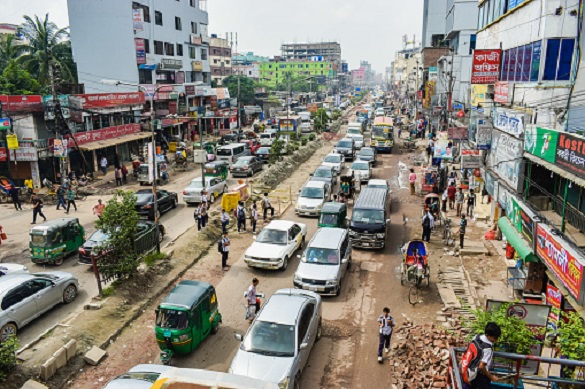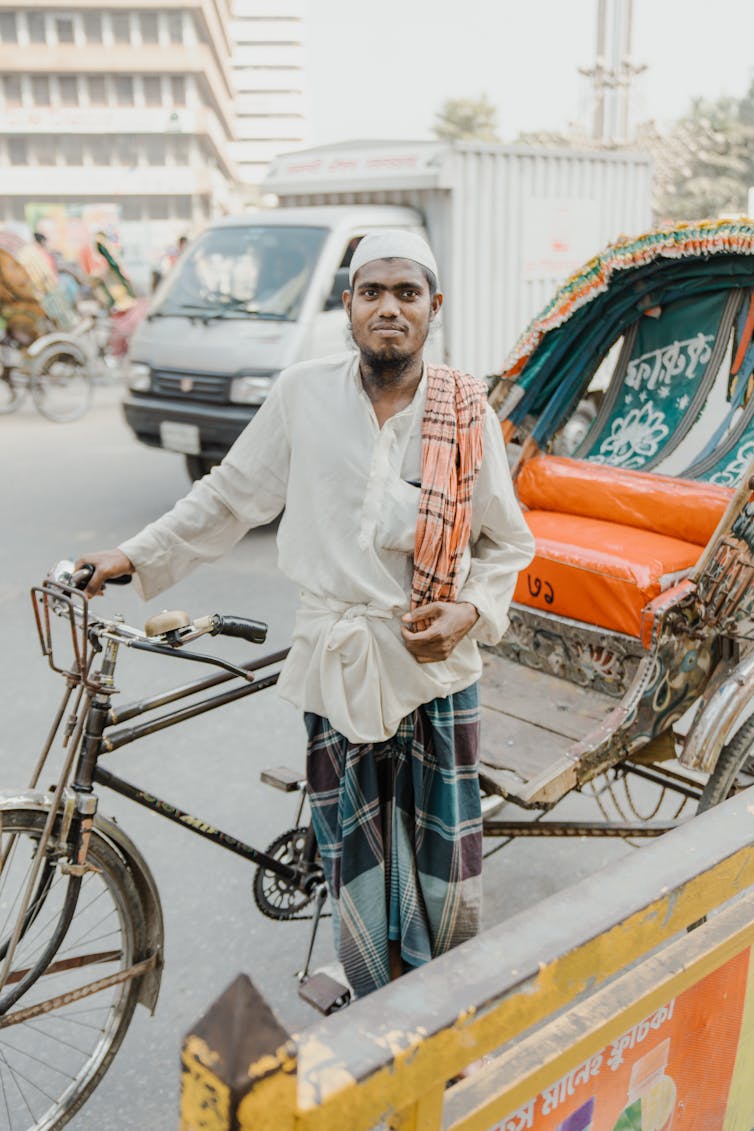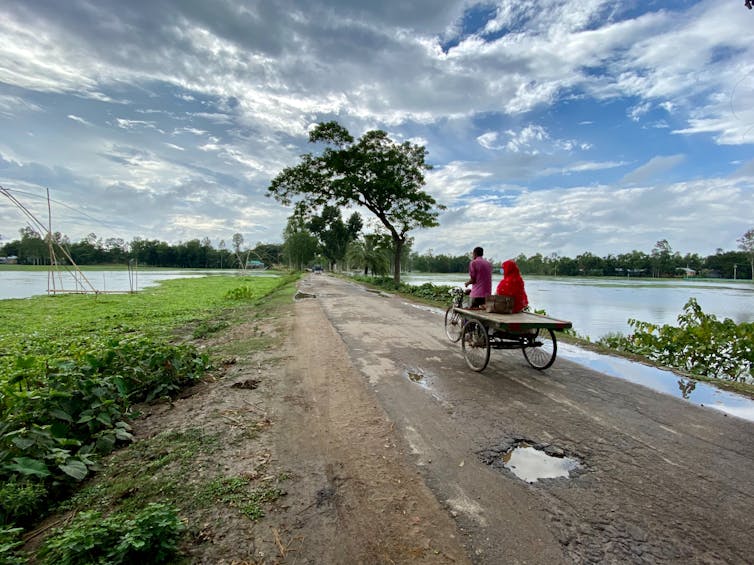
This article by Dr Shreyashi Dasgupta from the University of Liverpool’s Department of Geography & Planning and Annemiek Prins, from Radboud University was first published by The Conversation.
Like many fast-growing megacities in Asia and Africa, Dhaka, in Bangladesh, is often stigmatised as one of the most unliveable cities on earth, due to overcrowding, slums and substandard housing. The Bangladeshi capital boasts around 23 million residents.
In the 2023 edition of its annual global liveability index, the Economist Intelligence Unit (the research and analysis division of the Economist Group) ranked the Bangladeshi capital 166 out of 173 cities. As Helemul Alam of the Daily Star put it, that ranking makes it the “seventh least liveable city in the world”. While such lists tell a compelling story, it is an inherently biased one.
The Economist’s global liveability index is based on the experiences of expats rather than citizens. This kind of ranking inevitably privileges the perspectives of certain urban occupants and workers over others, often overlooking communities in urban peripheries.
We have shown that people move back and forth between urban and rural places. They shift between jobs, localities and accommodations.
Translocal lives
Our research was based on 18 months of ethnographic fieldwork that we both conducted between 2015 and 2018. We were examining two kinds of spaces linked to seasonal and labour migration: rickshaw garages and mess dormitories. These are typically located on the margins of the city in neighbourhoods such as Mirpur, Rayerbazar, Kamrangirchar, Shonir Akhra and Badda. We interviewed more than 100 people passing through these spaces in search for work and income, from rickshaw drivers, construction workers and garment workers to small-scale entrepreneurs.
We found that both mess dormitories and rickshaw garages are brimming with movement and business. They accommodate varying numbers of workers throughout the year, depending on the seasons. They blur functions of sleeping, working and entrepreneurship.
In a 2019 paper for the Bangladesh Institute of Labour Studies, Khandoker Abdus Salam and Rezaul Karim estimated that there are 1.1 million cycle-rickshaws operating on the streets of Dhaka, accommodated in garages across the city.
Rickshaw garages vary significantly, from cramped tin shed storage spaces with a handful of rickshaws to large half-open structures of bamboo and corrugated iron. Some simply consist of an open field with anything from a handful of rickshaws to 200 vehicles.
Rickshaw drivers are almost exclusively men. They rent vehicles by the day. Most do not have a permanent home in the city. Instead, they use the provisional, rent-free accommodation the garages provide.
In their study, Salam and Karim found that only 45% of rickshaw pullers rent a room in the city with their family. Over 80% spend at least a week at their rural home every six months.
One driver we interviewed, Jalal, usually runs a fish farm on the coast and had turned to the rickshaw industry to supplement his earnings:
I do not drive a rickshaw permanently. I only came to Dhaka for four months. I lost my fish stock this rainy season due to heavy flooding.
Every night, Jalal slept on a bamboo platform above the garage in Dhaka along with about 25 other people. He hoped to be able to move back to his home and business in the countryside after the rainy season had ended.

Alexis Rodriguez/Unsplash
Multidirectional migration
Mess dormitories host a much broader segment of the rural–urban migrant population. The men, women and families housed there work across numerous industries: domestic help, construction, garment factories, rickshaw and car garages, small-scale businesses, street food stalls and local restaurants.
Some dormitories are horizontal two-storey buildings. Others are built vertically, rising to four or five storeys. While typically made of permanent materials, these dormitories can seem unfurnished, as the most common living arrangement within them is on the floor. No beds were provided in the dormitories for men that we visited.
Makeshift walls of cardboard sometimes create separate sleeping quarters for women. Since moving to Dhaka, ten years ago, Ishrat, a 38-year-old home-based embroidery worker and a widowed mother of three, has moved eight times, in search of cheap rent and the ability to work from home so she can look after her children. As she explained:
Every morning I rearrange this room with only one bed into a workshop. I teach embroidery work to women in the neighbourhood and do not mind sleeping on the floor as long as the room had sufficient electricity to continue my work after dark.
Dormitories offer flexible rental arrangements, from one-day or weekly rentals to monthly and year-long options. This allows people to move frequently.
Cities as places of work
Urbanisation in south Asia is often described in the media in dystopian terms. Cities are said to be overburdened by the pressure of migrants from rural areas, who have no other option than to settle in slums.
Two wrong assumptions underpin this kind of narrative. First, that the city is a bounded and self-contained unit that can somehow overflow. Second, that rural-urban migration is a one-way process, leading to permanent settlement.
Demographers have long shown, however, that the divide between city and countryside is increasingly blurred.
A primary driver of Dhaka’s rapid urban growth is rural-urban migration triggered by land loss, unemployment and river bank erosion. But this kind of move doesn’t happen in a linear fashion, nor is it necessarily permanent. As development studies expert Rita Afsar highlights:
Migration involves a spectrum of movement, from commuting or temporary, absence from the home for a couple of days at a time to seasonal or permanent relocation.

Hasib Matiur/Unsplash
Dhaka is not merely a space of arrival or of residence. It is shaped by what the geographer Benjamin Etzold terms “translocality”: people organising their lives and their livelihoods across different places. Doing so, as Ishrat and Jalal’s stories highlight, requires a monumental effort.
Cities need to be discussed not only in terms of their liveability but also in terms of their workability. What makes a city workable to people like Ishrat and Jalal is access to informal labour markets, cheap travel options, flexible housing and rental arrangements. It is also the possibility of maintaining translocal networks and livelihoods – of continuing to live between places.
Shreyashi Dasgupta, Lecturer in Critical Social & Political Geography, University of Liverpool and Annemiek Prins, Postdoctoral researcher and lecturer, Department of Anthropology and Development Studies, Radboud University
This article is republished from The Conversation under a Creative Commons license. Read the original article.